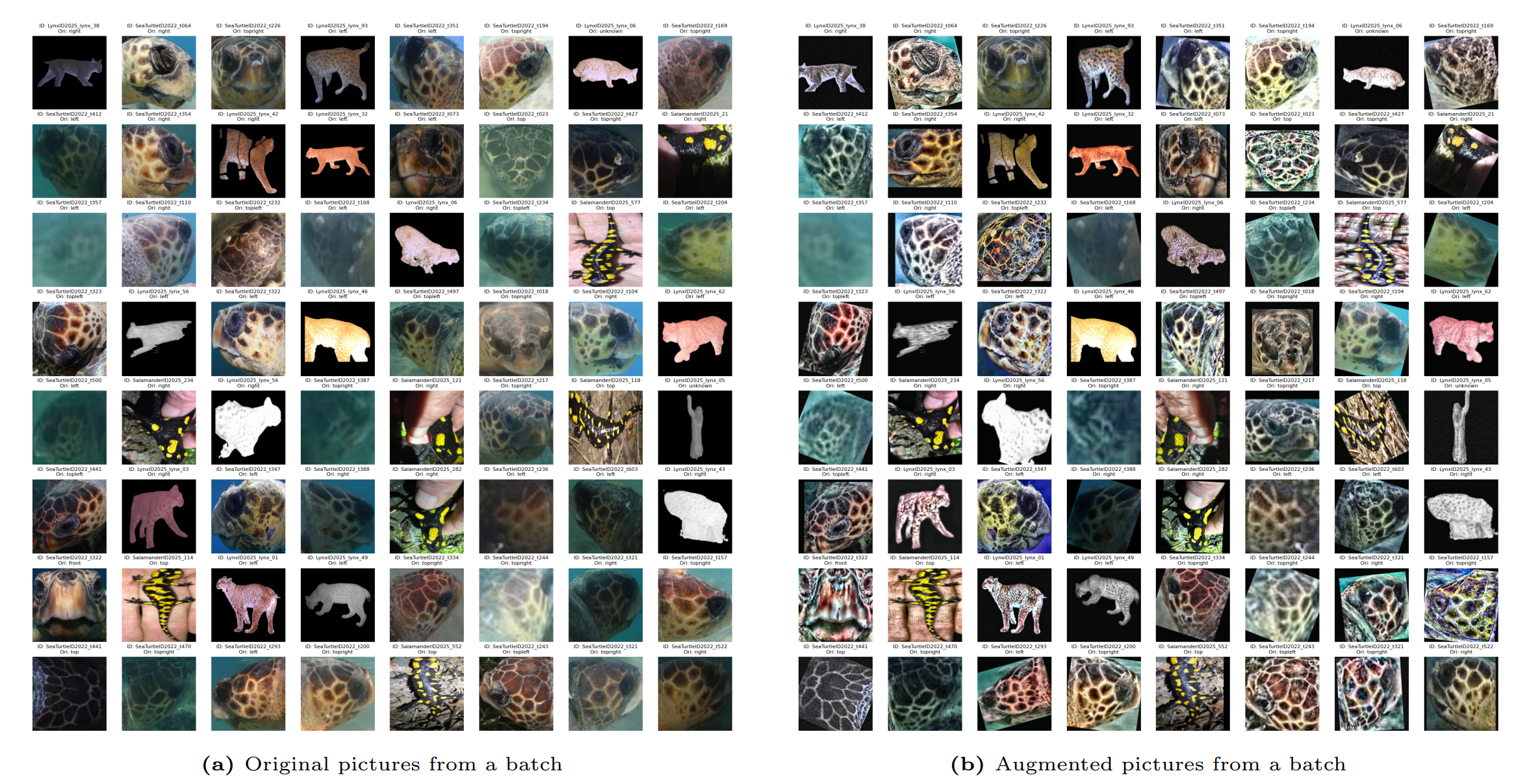Robust animal re-identification (Kaggle/AnimalCLEF25)
Leader · CVPR‑FGVC & LifeCLEF · open‑set recognition
Project summary
The major difficulty in wildlife research is identifying animals’ unique characteristics—such as spots and fringe. Traditional methods mainly rely on manual observation, which is not only time‑consuming and labor‑intensive but also prone to human error. Recent developments in image identification and pattern recognition have provided more systematic identification techniques. However, current image identification models are sensitive to noise artifacts, illumination conditions, and viewpoint variations, and they frequently fail to generalize to novel environments. Moreover, most models are designed for closed‑set recognition.
Our project aims to tackle these issues by constructing robust models for recognizing individual sea turtles, salamanders, and lynxes in the WildlifeReID 10k dataset. The primary objective is to develop models capable of both identifying seen individuals and detecting unseen ones—the open‑set recognition capability at which many deep learning approaches typically underperform. We mainly implemented fine-tuning of the pre-trained MegaDescriptor model via two complementary strategies (cross-entropy and triplet loss), combined with species‑specific adaptive thresholds and appropriate image enhancements.
This work is expected to save wildlife researchers significant time and provide more accurate data for comparing conservation efforts—whether it’s tracking endangered turtles or monitoring lynx populations.




